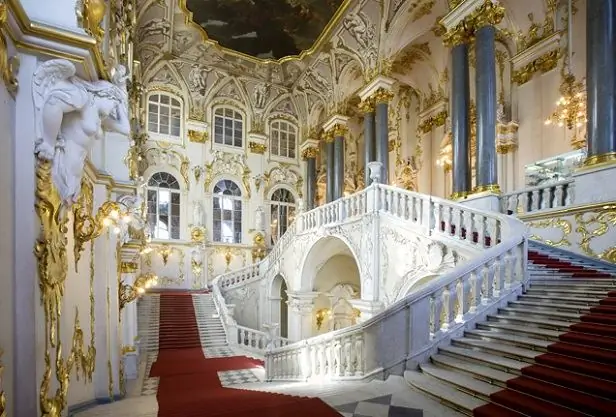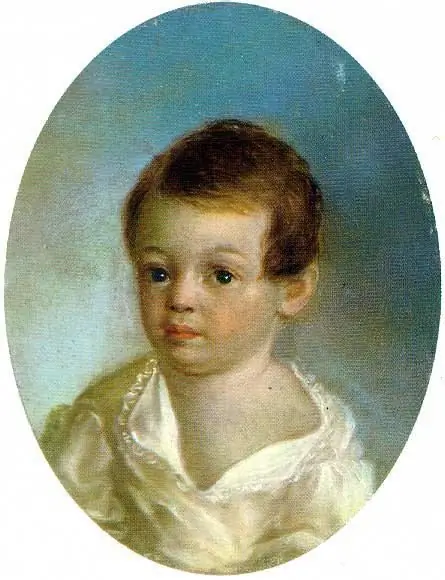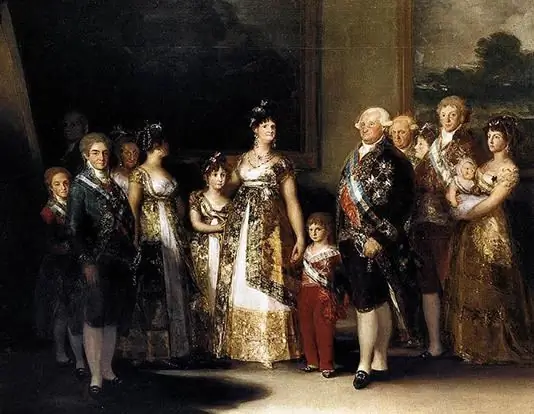2025 Author: Leah Sherlock | [email protected]. Last modified: 2025-01-24 17:46:24
Everything touched by Raphael's brush became "divine". This also applies to his portraits. Raphael of Urbino became famous for the huge number of Madonnas and women in his paintings. The article will consider only male images of Raphael, painted from patrons, friends, just customers. According to contemporaries, Raphael very accurately conveyed the resemblance to the original on his canvases, he could "capture" the very essence of the model's character.
Attributed to Raphael
Since Raphael is one of the most famous artists in the world, all his works are highly valued. This leads to the fact that many paintings by the masters of the papal circle are attributed to him. In those days, artists often "finished", copied and reworked each other's work. In addition, one must take into account the fact that not all of the paintings by Raphael, who has many students, were performed by himself from beginning to end, especially in the last five years of his life. Often he just started, slightly corrected and completedthe work of students with a few strokes that at the same time made them sparkle, as his contemporary Giorgio Vasari wrote.
And it is also necessary to take into account that during his short life the artist repeatedly changed his style of painting, creatively assimilating the best of what other masters did. Because of this, there are difficulties in determining the authorship of paintings.
From the portrait work of Rafael Santi, no more than 20 works have survived, undoubtedly belonging to his brush. Most of them remain in the Pitti and Uffizi galleries (Italy).
Raphael, portrait of Baldassare Castiglione

The painting depicting Baldassare from 1514-1515 is one of the most significant works of both the artist himself and all Renaissance art. The portrait depicts Baldassare Castiglione, a diplomat and humanist, a typical representative of a noble Tuscan family, friend and patron of Raphael. It looks surprisingly natural on the canvas, even some shyness is felt in clenched fingers. But the mind and irony burning in the eyes of himself, posing, allow the audience to easily imagine this person laughing and serious at the same time. At the time of the portrait, Baldassare was 37 years old. The canvas depicts a man standing confidently on his feet and knowing the value of himself and life.
Nobleman and warrior, his own in the circle of artists and writers, papal nuncio in Spain and a man who loves life, personifying the era of humanism and freedom, such is Castiglione. There is absolutely no swagger and ambition in the features of the face, which distinguishedmost portraits of noble Italians of that era (and representatives of the nobility of other times). It is not surprising that Titian, Matisse and Rembrandt admired the work and took something for themselves. Then Franz Hals will masterfully paint portraits that convey an instant state, sharpness and multiplicity of emotions, eyes from which you can’t take your eyes off.
Patrons of Raphael
In his life, Rafael Santi painted many portraits of his patrons. The ability to please was inherent not only in the works of the great artist, but also in himself, in contrast to the gloomy and stern Michelangelo. History does not mention either Raphael's enemies or his quarrels with friends, patrons, or comrades in the shop. All the paintings painted by the artist were liked by both the models and the audience. Therefore, the master had a lot of orders. But the main customers of Rafael Santi should be considered, of course, the popes and their entourage. The cost of the work was high, so the artist became rich very soon.
Pontiffs in the works of Raphael
Raphael begins to paint portraits of popes with Julius II in 1511, already being a fairly mature and recognized artist. The canvas depicting the pontiff is kept in the National Gallery in London. Raphael was recommended to the pope by the architect Bramante, a countryman of the artist. The charm and efficiency of the young master endeared him to the pontiff, an imperious and ambitious person. He entrusted Raphael with painting the halls of the Vatican, and then ordered to clean off the frescoes of the old masters, preparing the walls and ceilings for the work of Raphael, which was done.
Except for the portrait of the popeJulia 2, Raphael is famous for the image of Leo X with cardinals, dated 1518-1519, stored in the Uffizi Gallery in Florence.
Images of Roman pontiffs require special attention. Let's take a look at some of them.
Julius II Raphael

This is one of the most memorable paintings by the great artist. The portrait of Pope Julius II shows a very old man seated in an armchair with many attributes of his power. He was deep in thought, his thoughts are not here, but they are calm. He is dressed ceremonially: a red mantle and a white surplice beautifully set off each other, a tiara is a symbol of papal power on his head, and rings on his hands. Authority, adherence to principles and unbending strength - these are the characteristics of this person. And also love for expensive and beautiful things. The face of the pontiff is harsh and dry. About the liveliness and naturalness of the portrait, D. Vasari wrote that when they saw him, people trembled, as if before a living one.
Leo X with cardinals

This portrait, if you replace the clothes, could well be the image of the head of some mafia with assistants. The feeling of a difficult relationship and the presence of a large number of common dirty deeds for this trio is very difficult to get rid of. Neither an open book, nor smart eyes and beautiful hands of the pope, nor expensive fabrics, nor gold, nor the red robes of the cardinal brothers save. The red and black tones of the painting emphasize and complement the impression.
Portrait of Agnolo Doni at the Pitti Gallery, Florence

This work was commissioned by Raphaelsteam room (together with the image of his wife, Maddalena Doni) and was completed in 1506. Admired by the work of Rafael Vasari, speaking about the painting, he tells more about the history of its creation than about the work itself, considering it a "passing point" in the master's work.
The portrait depicts a young, richly dressed man, with a tensely wary and at the same time proud look, in which one can guess both slyness and strange defenselessness at the same time. He clearly wants to get up and leave, judging by the look, and the posture speaks of complete relaxation and poise. This duality was in the life of Agnolo Doni: being a major wool merchant, he spent a lot on the acquisition of art objects. The order of a double portrait from the famous Raphael obviously cost him dearly and was made only for the sake of his wife.
In the picture, Agnolo is depicted in a fashionable, well-tailored, rich suit (underwear made of obviously expensive and thin fabric) and a soft cap to match, rough hands are emphatically decorated with rings.
"Cardinal" kept at the Prado Museum, Madrid

Painted on wood in 1510-1511 by Raphael "Portrait of a Cardinal" was commissioned by the artist and liked by the customer. A bright orange-and-scarlet robe with a number of buttons and the same dress cap help set off the expressive black eyes, a slight blush and delicate skin of the model. Calmness and self-confidence, imperiousness and at the same time the ability to flatter in a pose and pursed lips complete the characterization. Still young, but going far - that's the conclusion that suggests itself.
Many paintings depicting young people made or attributed to Raphael vary greatly in color and impression.
Let's consider two works by Raphael: "Portrait of a Young Man" and "Portrait of a Young Man with an Apple".

The canvas with an apple, dated 1505, depicts a young man (presumably Francesca Maria della Rovere, 15 years old). A thoroughbred, graceful face, half-closed eyes, thin lips are striking. A beautiful red suit, generously trimmed with fur, demeanor - all indicate that their owner is rich and noble. Rigidity and inexorability peep from the picture, it is unlikely that the smile of this person will be pleasant.
Another work by Raphael, the "Portrait of a Young Man" made on wood, presumably by Pietro Bembo, leaves a completely different impression. The master filled the image of his friend with peace, light and love, as he did in numerous frescoes and paintings of Madonnas. The young man in the portrait of Raphael, with all his good looks and gentleness, looks clearly a man: strong, kind and purposeful. A powerful neck and shoulders give out the figure of a warrior, a protector.
This young man will later reach the heights, become Cardinal Pietro Bembo and a famous writer and poet in his time, the author of the "Azulin Conversations". He will be depicted by Titian in the red cardinal robe at the age of 70.

The strength and glory of Raphael as a portrait painter
For more than one hundred years, the work of the master will interest people of allworld, many more people will see hidden characters in Raphael's paintings, a variety of features of their acquaintances, friends and enemies. Many artists will learn from Raphael the skill of the portrait. After all, the master possessed the power capable, with all the greatness of his rank, to win over to his side such powerful people as Julius II and Leo X, managed to achieve with their help the greatest honor both for himself and for art.
Recommended:
Masterpieces of the Hermitage. Paintings by Leonardo da Vinci, Raphael Santi, Titian Vecellio

One person was not too lazy and considered that it would take 8 years to completely bypass the entire Hermitage, while devoting only one minute to inspecting one exhibit. Therefore, when going for some aesthetic impressions to this museum of our country, be sure to stock up on a lot of time, as well as the appropriate mood
Perov Vasily Grigorievich: paintings, their names and descriptions

Vasily Grigorievich Perov (1834-1882) - the great Russian artist-itinerant. During his lifetime, he was recognized as one of the best representatives of everyday realistic and historical painting, an outstanding portrait master. In the article we will consider the most famous paintings by Perov Vasily Grigorievich with names, we will give a brief description of each of them
Pushkin's parents: biographies and portraits. What were the names of Pushkin's parents

Many people know who Alexander Sergeyevich Pushkin is. His great works cause awe not only among the Russian reader. And, of course, most people are well acquainted with the biography of the poet, which everyone has carefully studied since school days. But few people remember who Pushkin's parents were, knows their names and even more so what they looked like
Portraits - what is it? The meaning of the word "portraits". Samples

In order to understand the meaning of the word "portraits", let us first recall that this expression was borrowed by us from the French language. The French words "portrait" (image, depict) meant a detailed description of individual real-life people or their group by means of literature or fine art. At the same time, along with external similarity, the portrait should also capture the spiritual world of the individual
A. G. Venetsianov: paintings with names and descriptions

How is the work of a Russian artist with a sonorous surname Venetsianov most often defined? Paintings depicting genre scenes from peasant life are called the beginning of the domestic genre in painting, a phenomenon that will eventually flourish in the era of the Wanderers

